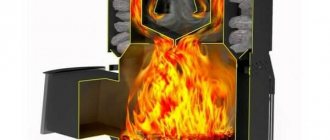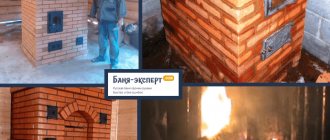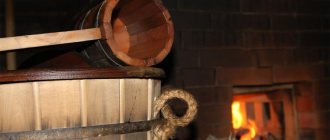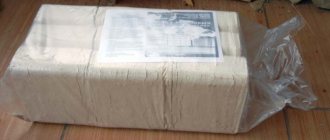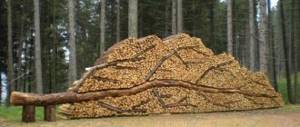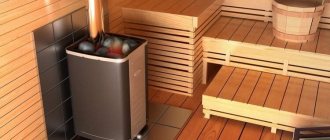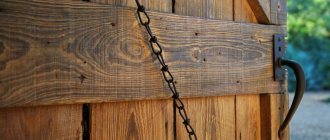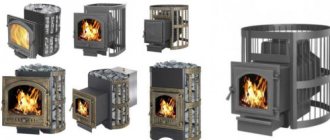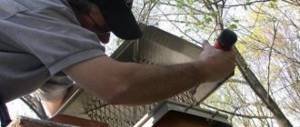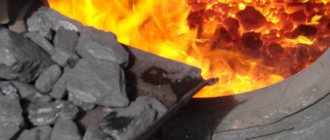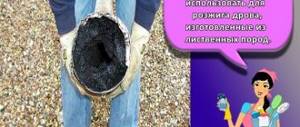The damper is a structural part of any stove. Its role is to control the draft in the chimney - while the stove is already flooded, as well as at the end of the firebox. In complex furnace mechanisms (multi-channel), a valve is used to switch smoke passages. The valve solves its main task by moving in the grooves of the frame. During this process, the area of the smoke channel changes, and accordingly this leads to a decrease or increase in vacuum. There are several options for the design of the damper. The first represents a frame within which a sheet of metal moves. For its manufacture, sheet metal is used. There are round-shaped structures, they are called views. To close it, use either a round lid or a washer. Views are made of cast iron.
Each valve has certain advantages and disadvantages. But, in particular, soot is deposited on each of them and therefore they must be handled carefully, otherwise you can get dirty. It is installed in a pipe through which hot air is removed. There is also a damper option that uses a rotating valve. It is also installed in the chimney, and by rotating the valve you can adjust the movement of hot air.
It is better to heat the stove with wet rather than damp wood...
Yes, that's true, but it's a joke. It is better, of course, to heat the stove with dry wood. Let's take a closer look at what dry, wet, wet and damp firewood is...
Wet firewood
Freshly cut firewood is considered damp. The relative humidity of such firewood is 50-100%. In such firewood, not only the intercellular space is filled with moisture. The pores through which moisture is delivered to the foliage - “channels”, “tracheids”, whatever you want to call them) - are also filled with moisture.
Damp firewood will not give the required temperature, if at all it burns and does not smolder. The fact is that for rapid evaporation of moisture in firewood, a significant temperature is needed. If you put a raw log in a hot firebox, it may even increase the intensity of the chemical processes of oxidation - combustion. After all, water begins to burn at high temperatures. But this is a topic for a separate article.
So, damp firewood will not provide the required temperature for ignition - there will be problems with melting it. Even if you melt such an armful, the moisture from the firewood will not go anywhere, but will fill the stove channels and can form an air lock. A combination of factors - low temperature of burning gases (in wet wood) and air humidity in the stove - will cause problems with draft.
Wet firewood
We accept firewood dried outside as conditionally dry, its relative humidity is 20-30%. But such firewood is quite hygroscopic. They can both quickly gain moisture and quickly release it.
Firewood with a relative humidity of 30% or more can be called wet, although it may appear dry. The fact is that moisture in the tracheid canals of wood evaporates faster than intracellular moisture. Therefore, firewood with a moisture content of up to 30% is conditionally dry firewood. This is the moisture content of firewood that is normal for outdoor drying.
Firewood that has been exposed to rain or soaked in anything is wet firewood. But this does not mean that they are raw. Firewood exposed to rain, if it was not damp, is still better than raw firewood, even if it appears dry. Well, something like this…
Now about dry firewood.
Selecting a solid fuel unit
After analyzing the cost of heating in various ways, I settled on a solid fuel coal heating boiler. Indeed, the cost of diesel fuel and electricity is constantly rising. Currently, heating with coal is approximately four times cheaper than heating with diesel or electricity. Gas is also not an alternative, since it is very expensive to carry out due to the notorious corruption component. The price of gas inevitably tends to the world price, as Gazprom understands it. The gas pressure in pipes in many areas at the peak moments (at extremely low temperatures) drops so much that boilers turn off and houses freeze out.
The main disadvantage of a coal boiler is the need to regularly (2-3 times a day) load it with fuel. If you agree to this, then a solid fuel boiler is your choice. Before installation, you need to decide on the power of the boiler, its installation location, the pipe layout from it and the coolant circulation system.
| Here is a selection of materials: IN Everything you need to know about heating and climate control Features of the selection and maintenance of boilers and burners. Comparison of fuels (gas, diesel, oil, coal, wood, electricity). Do-it-yourself ovens. Coolant, radiators, pipes, heated floors, circulation pumps. Chimney cleaning. Conditioning |
How do you dry firewood? To heat the stove with dry wood.
Wet and damp are better than raw, of course. But dry wood is exactly the type of firewood that needs to be used to heat the stove... Otherwise, it is difficult to achieve the effect that anyone who has experience living with a stove that heats well is used to.
Firstly, you need to protect the firewood, which seems to have dried out from direct precipitation. This will still reduce the possible moisture content of the firewood in inclement weather. When firewood is stacked in several layers, moisture flowing inside the stacks can remain there for a long time. It will increase the moisture content of the wood long after the rain.
Ideally, this is a special firewood shed covered with good roofing material, or at least a firewood shed tightly put together with boards.
Secondly, in order for wet firewood to effectively evaporate moisture, it is necessary to cut it... otherwise it will take a long time to dry.
Thirdly: in order for the firewood to dry completely, it must lie for two seasons, protected from precipitation - in the wind. Therefore, ideally, in a household with stove heating, there should be a supply of firewood for 2-3 years in advance - so that the firewood has time to dry thoroughly.
Well, the most interesting thing is that wet firewood from the street (and in any case, the firewood on the street will be wet, although not damp) needs to be brought into the house so that it becomes really dry. The firewood is drying out indoors. The relative humidity of dry firewood is considered to be from 8 to 15%. This is the best firewood for heating a stove.
It’s best to store a supply of firewood in the room for 2-5-7 days so that it has time to dry, then the burning process will be easy.
Now let's talk about heating the stove with wood.
How to heat a stove with wood - instructions and useful tips.
First, prepare dry firewood...
